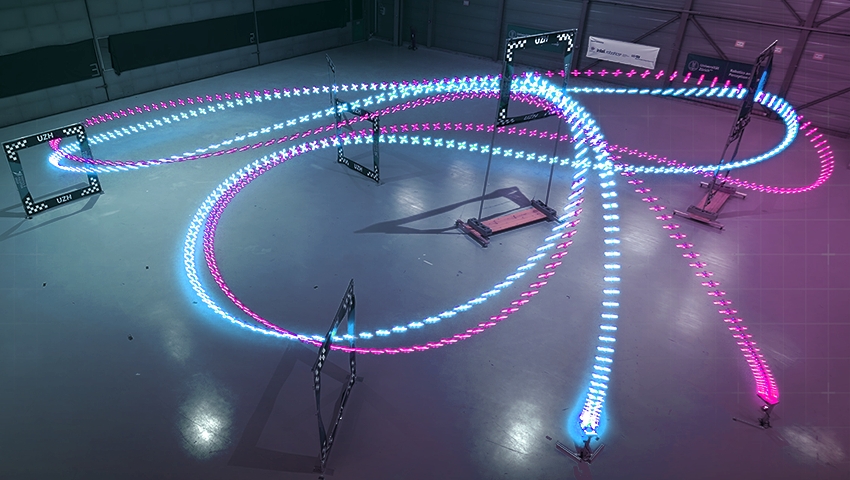
Drone racing drives AI innovation for space exploration
Researchers at Delft University of Technology’s (TU Delft) are utilizing drone racing to test neural-network-based AI systems intended for future space missions. This innovative research was a collaboration between the European Space Agency's (ESA) Advanced Concepts Team and the Micro Air Vehicle Laboratory (MAVLab) at TU Delft.
The project aims to explore the use of trainable neural networks for autonomously managing complex spacecraft maneuvers, such as interplanetary transfers, surface landings, and dockings. In the challenging environment of space, maximizing the efficiency of onboard resources, including propellant, energy, computing power, and time, is crucial. Neural networks have the potential to optimize onboard operations, enhancing both mission autonomy and robustness.
To validate these neural networks in real-world conditions, researchers chose drone racing as an ideal testing ground. The Cyber Zoo, a 10x10 meter testing area at TU Delft’s Faculty of Aerospace Engineering, provided the perfect setting. Here, human-piloted drones alternated with autonomous drones equipped with neural networks trained through various methods.
Drone racing serves as an excellent testing ground for end-to-end neural architectures on real robotic platforms, helping researchers build confidence in their applicability to space missions. The drones raced through a set course, simulating the constraints and challenges that spacecraft would encounter during missions.
Traditionally, spacecraft maneuvers are meticulously planned on the ground and then uploaded to the spacecraft. The Guidance part happens on Earth, while the Control part is handled by the spacecraft. However, the unpredictable nature of space, with variables such as gravitational shifts and atmospheric turbulence, poses significant challenges.
The alternative approach, called end-to-end Guidance & Control Networks (G&C Nets), involves all processes taking place on the spacecraft. Rather than following a predetermined course, the spaceship continuously replans its optimal trajectory from its current position, resulting in much greater efficiency. This method drastically reduces the resource costs associated with traditional brute force corrections.
There are many similarities between drones and spacecraft, although drone dynamics are faster and noisier. In racing, time is the primary constraint, but it can be used as a proxy for other variables critical to space missions, such as propellant mass.
Despite the limitations of satellite CPUs, the G&C Nets are surprisingly compact, storing up to 30,000 parameters in memory using just a few hundred kilobytes and involving fewer than 360 neurons.
For the G&C Nets to be effective, they must send commands directly to the actuators – thrusters for spacecraft and propellers for drones. The main challenge was addressing the reality gap between simulated and real actuators. The team tackled this by teaching the neural network to adapt to real-world conditions. For instance, if the propellers provide less thrust than anticipated, the drone detects this via its accelerometers, prompting the neural network to adjust commands to follow a new optimal path.
The vibrant academic community in drone racing provides an excellent opportunity to test and refine these systems. Using drones helps to establish a solid theoretical framework and set safety parameters before planning an actual space mission.
With the Cyber Zoo drones are not merely competing for speed but are also paving the way for future space exploration. By refining neural-network-based AI control systems in this demanding environment, ESA and TU Delft are making significant strides toward more autonomous and efficient space missions.
